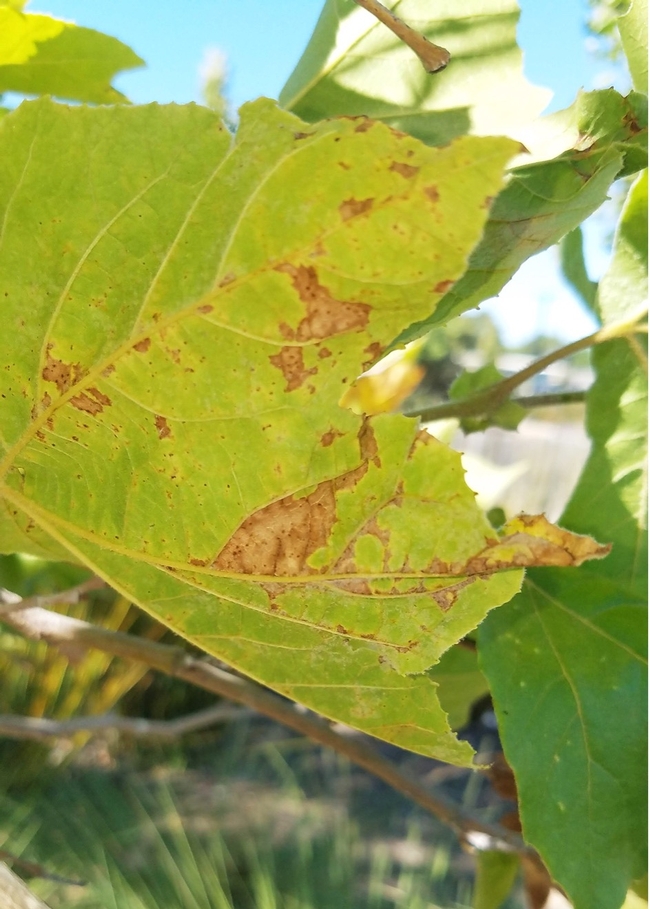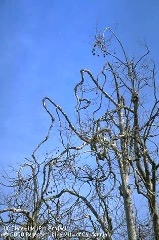
Have you been seeing a lot of defoliated sycamore trees recently? Sparse foliage and early leaf drop on sycamore trees might be due to anthracnose. The cool, wet spring in many parts of California provided the perfect conditions for this disease. Anthracnose is a common fungal disease sometimes called leaf, shoot, or twig blight. It can cause twisted, distorted branches in American sycamore, some varieties of London plane trees, and California sycamore trees. Sycamore anthracnose is primarily an aesthetic concern since it usually doesn't kill established trees.
Symptoms
Take a close look at the fallen leaves for the characteristic irregular blotches caused by this disease. Anthracnose can cause leaf spots, cankers, and wilting of young leaves in the spring (Figure 1). Emerging leaves turn brown and die. On older leaves, irregular spots or brown blotches begin on either side of the main leaf vein. The lesions spread, covering much of the leaf surface. Extensive twig or shoot blight occurs when young, growing shoots are killed. New shoots grow back from lower on the branch, eventually causing the branch to look gnarled with a “shepherd's hook” appearance (Figure 2).
Springtime disease
The fungus overwinters on infected sycamore twigs and dead leaves., The disease is most severe during wet years when temperatures during the leafing-out period are below 55°F. The disease is not a problem in hot, dry weather. While the first flush of leaves might be lost to the disease, the canopy will regrow as the second flush of growth matures.
Management
Sycamore anthracnose is best managed by cleaning up fallen infected leaves to prevent the spread of the spores to the following year's new growth. Rake and dispose of fallen leaves and twigs during the growing season and in the fall. Prune and dispose of infected twigs and branches in the fall or winter. Avoid sprinkler irrigation that keeps trees wet. When planting sycamore trees in gardens and landscapes, choose resistant cultivars.
Fungicides do not reliably control sycamore anthracnose in California. By the time you see symptoms, it's too late to treat since fungicides effective against the disease are preventive (before the symptoms appear), not eradicative (after the disease symptoms appear). In landscape and residential settings, chemical spray applications are usually not practical due to the size of the trees and the high potential for pesticide drift.
Most sycamore trees will fully recover from defoliation caused by anthracnose, so the best option could be to just rake up the fallen leaves to reduce disease inoculum for the following year.
For more information about anthracnose, see the UC IPM Pest Notes: Anthracnose.
[Originally published in the Summer 2023 Issue of the UC IPM Green Bulletin Newsletter]
